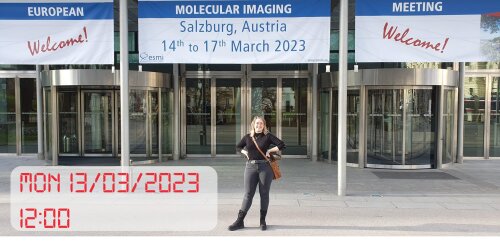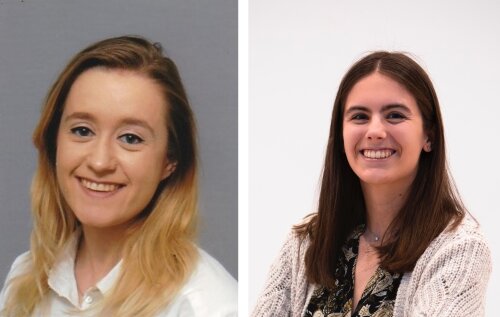
We are Judith van Rooij and Joëlle van Rijswijk, PhD students of the Bio-Imaging Lab.
Our research focusses on the development of non-invasive biomarkers, using magnetic resonance imaging (MRI), for neurodegenerative disorders. More specifically, Judith’s project is about Alzheimer’s disease, a progressive brain disorder primarily characterized by memory loss and cognitive decline. Joëlle is researching Huntington’s disease, a genetic brain disorder that causes progressive motor and cognitive impairment, as well as behavioral changes. Both diseases are currently incurable and can greatly impact the quality of life of those affected and their loved ones.
In the four years as PhD students at the Bio-Imaging Lab, we hope to significantly contribute to the neuroscientific research by finding early, non-invasive MRI biomarkers for these devastating diseases. But how do we do this? A lot of our friends and family think that doing a PhD is only acquiring data, analysing data and writing papers & thesis. Luckily, there is more to it. In this blogpost, we will give you a sneak peek into our lives as PhD students.
8:00
Judith: After a very brisk bike ride through a beautiful winter landscape, it's important to first warm up and recover before I start my workday. A nice big cup of tea helps with that! Additionally, before I get started, I always make a daily plan so that I have an overview of everything I want to achieve today.
Joëlle: First destination of today: Campus Middelheim. Here, I will participate in a course of the Antwerp Doctoral School. I’m still a little early, so I use the opportunity to go through my emails and prepare my agenda while admiring this pretty white landscape in the back.
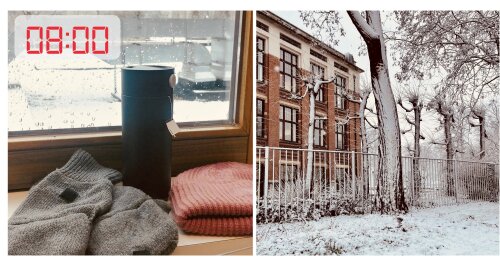
9:00
Judith: Within the field of Alzheimer’s disease, a lot of research is ongoing. Therefore, it is highly important for me as a PhD student to stay up-to-date with the most recent literature. A researcher never stops learning 😉.
Joëlle: The course of the Antwerp Doctoral School is about to begin. The doctoral program does not only include performing research, also training our academic skills is one of the priorities to become excellent researchers. Today, I will learn how to create and present a scientific poster to have impact!
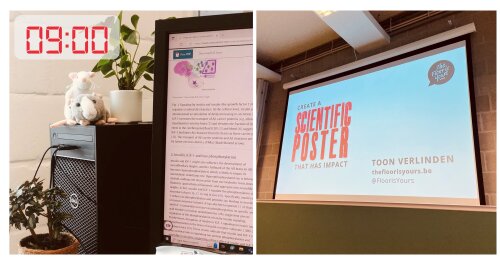
12:00
Judith: The beauty of science is sharing knowledge and results. As a first year PhD student, I am very proud to present preliminary results of my study soon at an international conference. As Joëlle has learned this morning, the best way to create impact, is using a scientific poster. Therefore, step 1: picking up our posters at the printshop!
Joëlle: One of the highlights in the PhD-life: immediately unpacking the poster as soon as we arrive back at the lab and checking the result. It always makes me very excited to see the study outcome printed on this A0 size format. I can’t wait to share these findings with the rest of the neuroscience community!
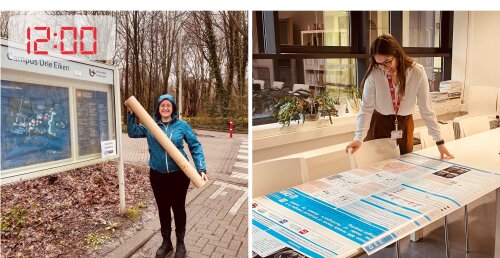
14:30
Judith: Now that it stopped snowing and that everything is melted (as expected), this is the ideal moment to pay a visit to our laboratory animals. This is necessary for administrating daily medication as part of my study. More importantly, with my regular visits, I can keep track on the wellbeing of these animals, which is my highest priority when working with animal models.
Joëlle: Time to acquire an MRI scan! In this study, I am investigating the blood-perfusion of the brain in Huntington’s disease. A major advantage of MRI, is that high resolution images can be acquired, without the need of surgically opening the brain. There is no risk for radiation exposure like with a CT scan for example, however, we still need to think about some safety measures since the MRI machine is highly magnetic.
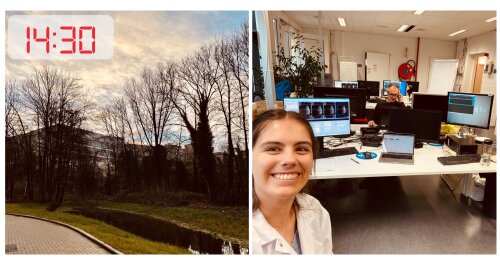
17:00
Judith: After finishing up my to-do list it is time to go home. Tomorrow there is another day!
Joëlle: Before I’m going home, I will quickly do a quality check of the MRI data that I just acquired. Experiment successful?
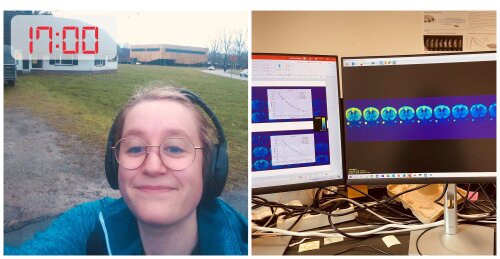
Monday 13/03/2023 12:00
Judith: I just arrived at my first international conference in Salzburg, Austria! Ready to share our research, to discover the outcomes of other studies and to network with the science community!
